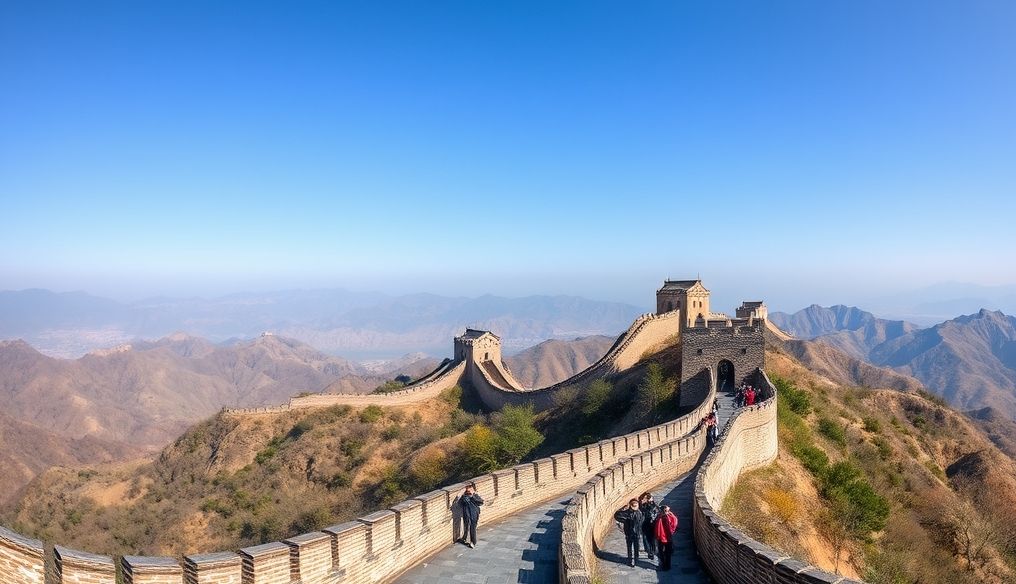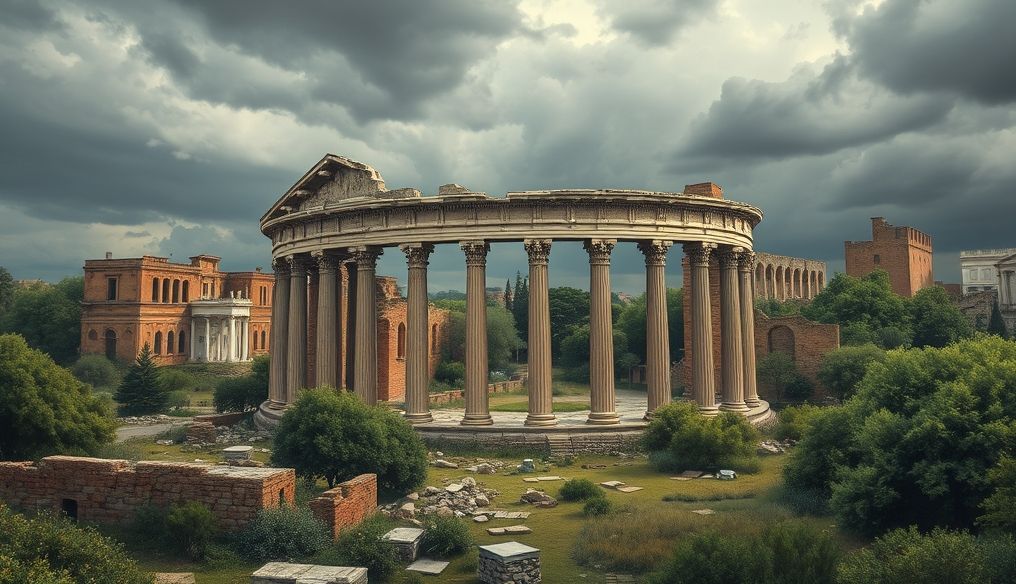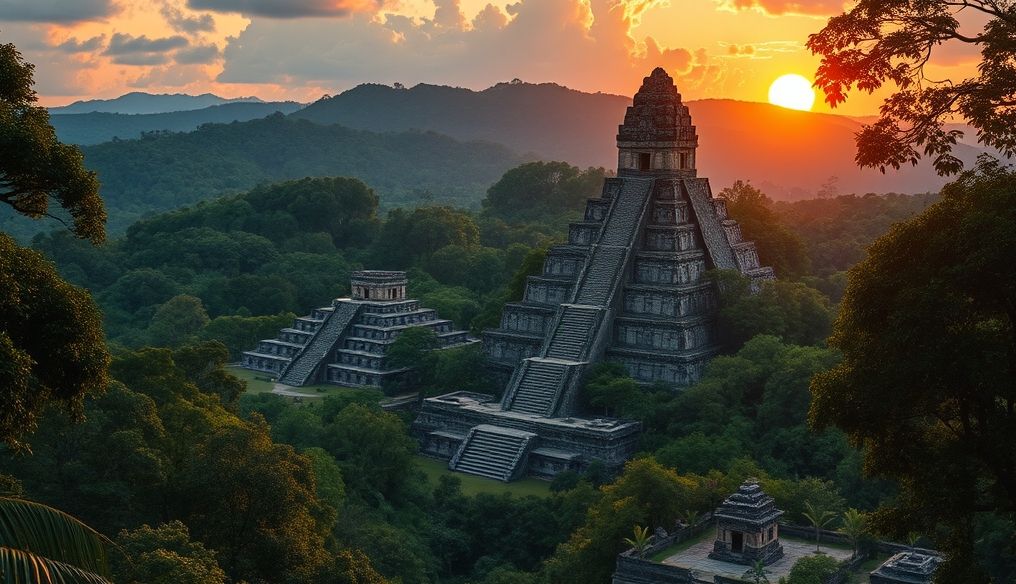Introduction: The Great Wall of China - A Symbol of Strength and Endurance
The Great Wall of China, one of the Seven Wonders of the World, is not just a massive wall of stone and brick, but a testament to a long history of conflicts, ambitions, and challenges faced by successive Chinese empires. This majestic structure stretches for thousands of kilometers across rugged terrain, from arid deserts to towering mountains, forming a symbol of strength, endurance, and human will.
Chapter 1: The Roots of the Idea - From Scattered Fortifications to a Unified Wall
Before the Great Wall of China became the unified structure we know today, there were scattered fortifications built by the states and feudal principalities in ancient China to protect their borders. The history of these fortifications dates back to the 7th century BC, during the Spring and Autumn period, a period characterized by constant conflicts and wars between rival states.
Early Fortifications: The Beginning of Protection
These early fortifications were simple in design, consisting mainly of short earthen or stone walls, and scattered watchtowers. They were intended to provide limited protection against raids and small attacks from neighboring nomadic tribes.
Unification of China and Unification of Walls
In 221 BC, Emperor Qin Shi Huang, the founder of the Qin Dynasty, succeeded in unifying China for the first time in history. Emperor Qin realized the importance of unifying the scattered fortifications to protect the new empire from northern invaders, especially the Xiongnu tribes. The Emperor ordered the unification of the old walls and their connection to each other, to form a continuous defensive wall stretching along the northern border.
Chapter 2: Why Did Emperor Qin Shi Huang Order the Construction of the Wall?
The construction of the Great Wall of China was not just a whim or a recreational project, but a strategic necessity dictated by the political and military circumstances of the time. Emperor Qin Shi Huang aimed to achieve several goals by building the wall:
- Protection from Invaders: The main goal was to protect the Chinese Empire from raids by the nomadic Xiongnu tribes, who posed a constant threat to the northern borders.
- Securing Trade: The wall was intended to secure trade routes and protect trade caravans from thieves and bandits.
- Imposing Control: The wall represented a sign of the empire's strength and control over the border territories.
- Unifying Identity: The wall aimed to strengthen the sense of national unity and belonging among the Chinese people.
Chapter 3: Building the Wall - An Arduous Task and Great Sacrifices
The construction of the Great Wall of China was a huge project that took many years and required great sacrifices. Hundreds of thousands of workers, including soldiers, criminals, and peasants, were recruited to work on the construction of the wall. Working conditions were extremely harsh, with workers exposed to bitter cold, intense heat, hunger, and disease. Historians estimate that hundreds of thousands of workers died during the construction of the wall, and were buried in or near the walls.
Building Materials and Techniques Used
The building materials used in the construction of the wall varied depending on the region and terrain. In mountainous areas, stone and brick were used, while in desert areas, rammed earth was used. Workers used simple construction techniques, such as levers and wooden platforms, to transport materials and lift them to the top.
Chapter 4: The Wall Through the Ages - Continuous Additions and Modifications
The Great Wall of China was not completed during the Qin Dynasty, but subsequent ruling dynasties continued to add new parts and modify the old parts. During the Han Dynasty, the wall was extended westward to protect the Silk Road, a vital trade route connecting China with the Western world. During the Ming Dynasty, most of the parts we see today were built, using brick and stone instead of rammed earth.
Chapter 5: Functions of the Wall - More Than Just a Defensive Barrier
Although the main function of the Great Wall of China was defensive, it had other important functions:
- Surveillance and Early Warning: The watchtowers scattered along the wall were used to monitor enemy movements and send early warning signals.
- Transmitting Messages: The wall was used to transmit messages and military orders quickly between different regions.
- Regulating Migration: The wall was used to regulate migration and prevent the entry of unwanted foreigners.
- Trade and Customs: There were checkpoints along the wall used to collect taxes and customs duties on commercial goods.
Chapter 6: The Wall in Chinese Culture - A National Symbol and Artistic Inspiration
The Great Wall of China has become a national symbol in Chinese culture, representing strength, endurance, and national will. The wall has appeared in many artistic and literary works, such as paintings, poems, and songs. The wall is also a popular tourist destination, with millions of tourists visiting it every year to enjoy its stunning beauty and ancient history.
Chapter 7: Myths and Tales About the Wall
Many myths and tales have been woven around the Great Wall of China, some true and some fictional. One of the most famous of these myths is the story of "Meng Jiangnu," a woman whose husband died while building the wall, and collapsed crying at the base of the wall, causing a part of the wall to collapse and reveal her husband's body.
Chapter 8: The Wall Today - Restoration, Protection, and World Heritage
Today, the Great Wall of China is a UNESCO World Heritage Site, and is undergoing restoration and protection programs to preserve it for future generations. The wall faces many challenges, such as natural erosion, human vandalism, and unsustainable tourism. However, the Chinese government remains committed to protecting this great monument and preserving it as a symbol of Chinese history and culture.
Conclusion: The Great Wall - An Ongoing Story
The Great Wall of China is not just a historical landmark, but an ongoing story of challenge and achievement, sacrifice and endurance. It reminds us of the human ability to achieve the impossible, and the importance of preserving our cultural heritage for future generations.




